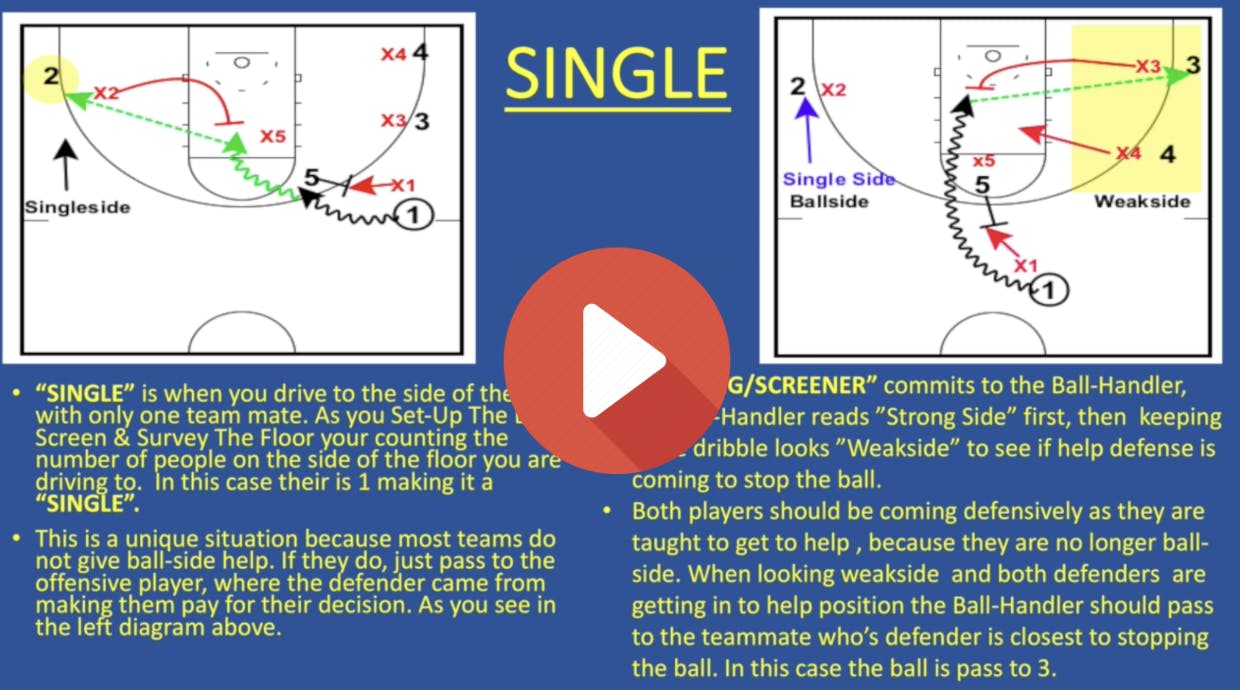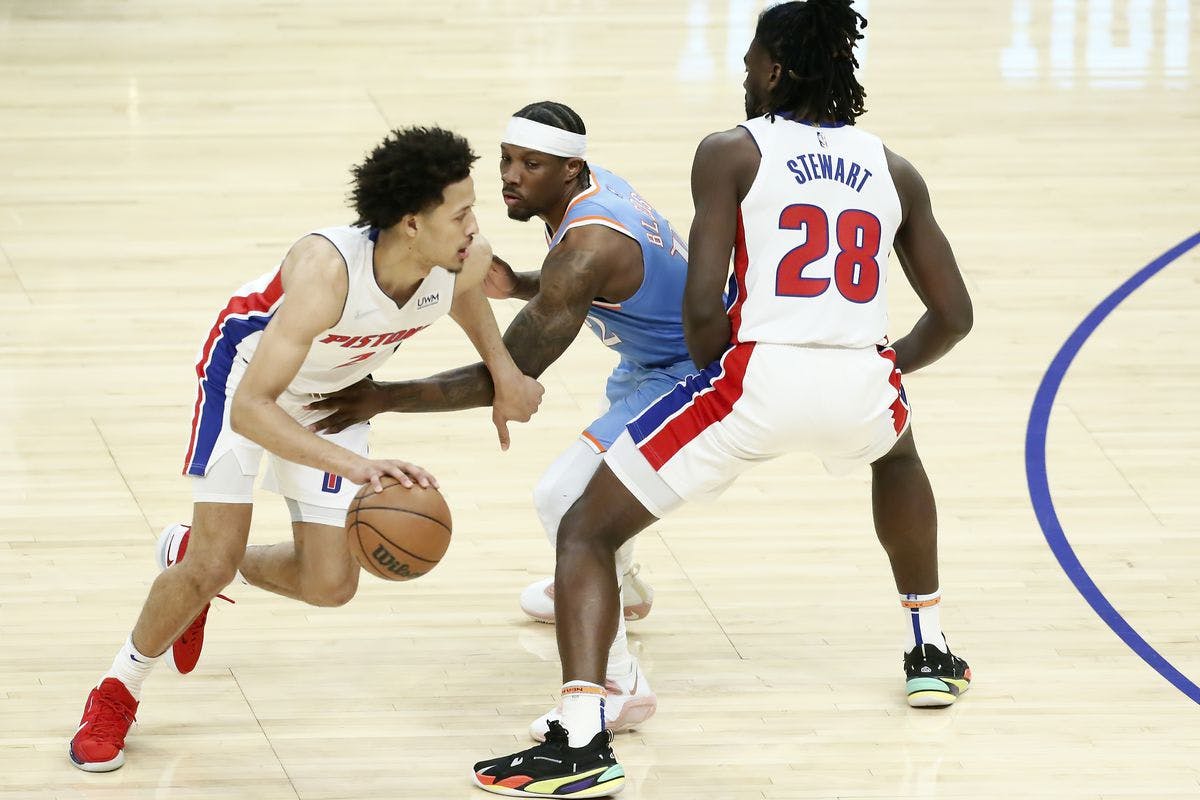- By Grant Young
The ball screen basketball offense in basketball has gained immense popularity due to its effectiveness in creating mismatches and open scoring opportunities.
However, its success hinges significantly on players making the correct pre-screen reads before the screen is even set. When executed properly, a ball screen can split defenses, forcing defenders to make quick decisions that often lead to breakdowns. The key lies in understanding how to read the defense before initiating the screen.
This involves recognizing the positioning of defenders, identifying potential switches, and anticipating how the defense will react.
For the ball handler, making the right read can determine whether to use the screen, reject it, or even find a quick pass to a rolling big or spacing shooter. If the defense is overcommitting to the screen, the ball handler might opt to exploit that by attacking the basket or creating space for a jump shot.
Conversely, if the defender is sagging off, a quick decision to take the shot or drive could capitalize on that misalignment. The screener’s role is equally important; they must time their screen effectively and be prepared to roll or pop based on the read. If they can predict how the defenders will respond, they can maximize their impact on the play, either by creating a lane for the ball handler or drawing defenders away from open teammates.
Communication between players is essential. A successful ball screen offense requires an intuitive understanding among teammates about who will be aggressive and how to adjust when the defense reacts. This synergy transforms the ball screen from a mere tactic into a dynamic offensive weapon.
However, players won’t be able to communicate effectively with each other if they’re unable to diagnose what the defense is offering them, in terms of defending the ball screen. This is why players must know the proper ball-screen reads they must make on select defensive sets. And few coaches can communicate the progression of these reads better than Wesley Brooks.
Coach Brooks was named Utah State University’s head women's basketball coach on April 1, 2024. Brooks brings 20 years of collegiate experience with him to Utah State and arrived after spending the past three seasons (2022-24) as an assistant coach at Ohio State. Under head coach Kevin McGuff, Brooks helped the Buckeyes to a pair of Big Ten regular season titles and three-straight NCAA Tournament appearances, including a run to the Sweet Sixteen in 2022, the Elite Eight in 2023 and the second round in 2024.
Coach Brooks’ ‘Pre-Screen Reads For The Ball-Screen’ clinic details what they need to read before the screen as they get ready to attack off the ball-screen. We've pulled two of the most common reads a player must understand and have included them for your use below.
What is Triple?
Coach Brooks explains that “Triple” is arguably the easiest ball screen read to make because it’s extremely clear on the court when a triple read is needed.
As a player sets up the ball screen, surveys the floor, and sees that whichever strong side they’re on has three players spotted up along the wing/corner, this makes for a “triple” read.
This also means that there is nobody to pass to on the weak side because the only player in that area will be the post player who’s coming up to set the screen.
Of course, the lack of a defender on that side will make it viable for the big to either roll or set up for a jump shot on the weak side once the screen is set. It will also open up a lane for the guard to drive into the paint.
If the initial screen is successful, one of the three strong-side defenders will likely leave their man to stop the drive into the paint. This is when the guard can look to pass to whichever player on the wing the defender is leaving.
What is Single?

Another important ball screen players must understand is what Coach Brooks calls “single”, which is when a player is driving to the side of the court with only one teammate (probably positioned in the corner).
This is more of an uncommon and difficult read to make once the screen (which is still from the post player) and ensuing drive occurs. There’s a chance the guard will have an open lane to the basket because the strong side defender will be reluctant to leave their man wide open. But if they do leave their man open (which they most likely will in order to stop the drive), the kick out to the corner man should be wide open.
There’s also a chance that one of the two weak side man defenders will notice the pick and roll leaving an opening paint and peel off of their assigned player to stop the drive. In that case, a kick-out to whichever player becomes available should be effective.
These reads aren’t only for the ball handler or the guard to make. It’s also important for the screener/post player to recognize and make this read because in the case of a “single” read, they should be remaining at around the free throw line or even at the top of the key in order to be available for a kick-out of the driving guard is met in the paint by a help defender.




No comments:
Post a Comment